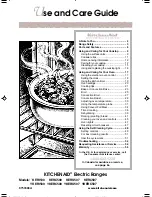
programmable individual passwords for the viewer, operator,
engineer and administrator level. The access control applies
to the front-panel user interface, the web-browser based user
interface and the PCM600 tool.
14. Inputs and outputs
The IED is equipped with six phase current inputs, two
residual-current inputs, three phase voltage inputs, one
residual-voltage input, one phase-to-phase voltage for
syncrocheck input and one phase-to-phase voltage for
automatic voltage regulator via online tap change input. In
addition to current and voltage measurements, the IED's
basic configuration includes 8 binary inputs and 13 binary
outputs. Additionally, basic configuration offers two RTD
inputs and one mA input. The phase current inputs and the
residual-current inputs are rated 1/5 A, that is, the inputs
allow the connection of either 1 A or 5 A secondary current
transformers. The three phase voltage inputs and the residual-
voltage input covers the rated voltages 60...210 V. Both
phase-to-phase voltages and phase-to-earth voltages can be
connected.
As an optional addition, the IED basic configuration includes
one empty slot which can be equipped with one of the
following optional modules. The first option, additional binary
inputs and outputs module, adds eight binary inputs and four
binary outputs to the IED. This option is especially needed
when connecting the IED to several controllable objects. The
second option, an additional RTD/mA input module,
increases the IED with six RTD inputs and two mA inputs
when additional sensor measurements e.g. for temperatures,
pressures, levels and so on are of interest. The third option is
a high-speed output board including eight binary inputs and
three high-speed outputs. The high-speed outputs have a
shorter activation time compared to the conventional
mechanical output relays, shortening the overall IED operation
time with very time-critical applications like arc protection.
The high-speed outputs are freely configurable in the IED
application and not limited to arc protection only.
The rated values of the current and voltage inputs are
settable parameters of the IED. In addition, the binary input
thresholds are selectable within the range of 18…176 V DC
by adjusting the IED’s parameter settings.
All binary input and output contacts are freely configurable
with the Signal Matrix or Application Configuration tool of
PCM600.
See the Input/output overview table and the terminal
diagrams for detailed information about the inputs and
outputs.
If the number of the IED’s own inputs and outputs does not
cover all the intended purposes, connecting to an external
input or output module, for example RIO600, increases the
number of binary inputs and outputs utilizable in the IED
configuration. In this case, the external inputs and outputs are
connected to the IED via IEC 61850 GOOSE to reach fast
reaction times between the IED and RIO600 information. The
needed binary input and output connections between the IED
and RIO600 units can be configured in a PCM600 tool and
then utilized in the IED configuration.
Table 3. Input/output overview table
Conf.
Analog channels
Binary channels
CT
VT
RTD/mA
BI
BO
A
8
6
2/1
8(16)
1)
13(17)
1)
2/1
8(16)
2)
13(16)
2)
2/1(8/3)
3)
8
13
1)
With optional BIO0005 module
2)
With optional BIO0007 module
3)
With optional RTD0003 module
15. Station communication
The IED supports a range of communication protocols
including IEC 61850, IEC 60870-5-103, Modbus
®
and DNP3.
Operational information and controls are available through
these protocols. However, some communication functionality,
for example, horizontal communication between the IEDs, is
only enabled by the IEC 61850 communication protocol.
The IEC 61850 communication implementation supports
monitoring and control functions. Additionally, parameter
settings, disturbance recordings and fault records can be
accessed using the IEC 61850 protocol. Disturbance
recordings are available to any Ethernet-based application in
the standard COMTRADE file format. The IED supports
simultaneous event reporting to five different clients on the
station bus. The IED can exchange signals with other IEDs
using the IEC 61860 protocol.
The IED can send binary signals to other IEDs (so called
horizontal communication) using the IEC 61850-8-1 GOOSE
Transformer Protection and Control
1MRS757846 A
RET620
Product version: 2.0
14
ABB
Содержание RET620
Страница 1: ...Relion 620 series Transformer Protection and Control RET620 Product Guide ...
Страница 62: ...62 ...















































